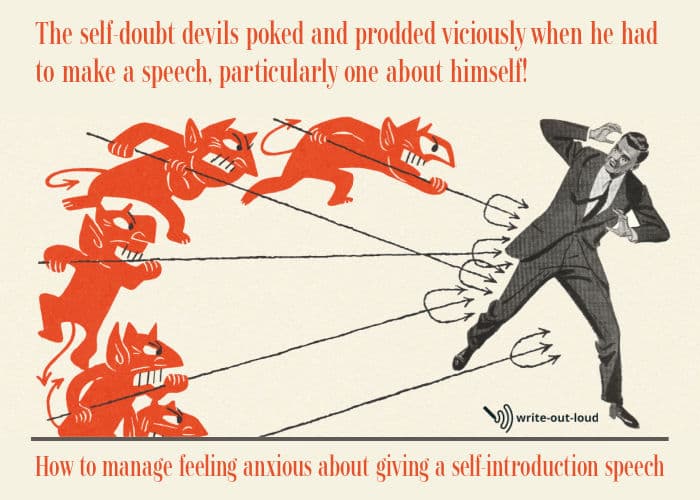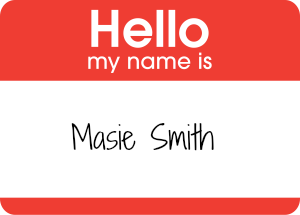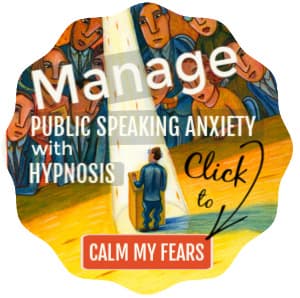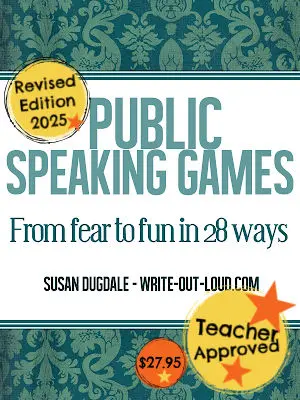- HOME ›
- How to write an introduction speech for a guest ›
- How to give a self-introduction speech
An example of a self-introduction speech
- with a step-by-step guide for preparing a short effective speech
By: Susan Dugdale
A self-introduction speech is often called for when a group of people get together first time. It could be a work-based seminar, a break-out group at a conference, a hobby group, or your new class at the start of the term. The occasions are numerous!
If you need to prepare short introduction speech about yourself, you're in the right place.
What's on this page

The purpose of a self-introduction speech
One thing a newly formed group generally shares is the need to make a bunch of strangers feel at ease: to quickly establish a sense of unity or belonging.
And one of commonest ways to achieve that, in a setting where people are expected to work collaboratively together, is to have each person give a brief 1–2-minute self-introduction speech.*
If you've not expecting it and have nothing prepared, that triggers a whole lot of questions about the purpose of the speech and what would be best to say.
*This is not an elevator speech - i.e., a brief, carefully worked pitch highlighting your strengths and experience to encourage a potential employer or client to consider taking you on.
You are already a member of the group. You don't need to pitch or advertise yourself. All you need to do is introduce yourself because these people don't know you.
Common questions people ask themselves
Usually, the leader will start and around the members of the group you go, one by one.
- What will you say when it's your turn?
- What's the purpose of this speech? What could it to achieve for you if you do it well?
- What can you say that will interest people?
- What topics fit with the occasion?
- What will the people listening expect to hear?
- What tone do you use? Formal or informal?
- And more importantly, if you're anxious about public speaking, what will stop the fear of making a complete fool of yourself?
First impressions count, so let's look at the elements that go together to make a good introduction speech about yourself.
Self-introduction speech content areas
There are six content areas to cover. The first three are essential. The remaining three lift your speech from 'basic' to something a little more interesting.
- Stating your name clearly
- Placing yourself - where you are from, the organization you belong to, the position you currently hold
- Background - what can you share that is related to the group's core purpose for meeting? Is it an event, experience, a particular skill or educational qualification?
- Interest, passion or goal - what genuinely interests you? What drives you? Is there a personal goal you want to achieve through being a member of this group?
- Sharing personal details appropriate to the setting of your speech e.g., your hobbies or pet peeves.
- Unity - what do you share in common with someone else in the group? Can you reference something somebody speaking before you said?
Self-preservation techniques for nervous speakers
Ignore everyone else and focus on yourself
If this is the first time you've made an introduction speech about yourself and, you're inclined to be tongue-tied, awkward and nervous, don't listen to what others are saying before you.
I know that seems rude, but the situation calls for self-preservation.

If you allow yourself to listen, you'll get mesmerized by everybody else's speeches and be unable to plan anything useful for yourself. That will heighten your anxiety.
Start with making some notes
Grab a piece of paper, or use the notes app on your phone, the moment the round-robin introduction is announced and start jotting down ideas.
Start with the first three items from the list above. That's the basic information: your name, where you are from and your background. Then add more as time permits.
Everything you put down should be relevant to the occasion and your audience. And remember to breathe well while you're doing it!
When we're anxious we tend to hold our breath which makes us feel worse. You'll find these breathing exercises help.
Watch the timing
Generally, the timing allowed for a self-introductory speech is between 1 - 2 minutes. (About 150-300 words.)
Going over that is poor form because it eats into the time allocated for everybody to speak. In addition, rambling on without being mindful of the larger group could be interpreted as boring and/or egotistical. Just try not to do it! ☺
Example self-introduction speech
Here's a simple short self-introduction speech sample. You can use it as a model to prepare your own speech. All up there are 130 words which will take approximately a minute to say.

Hi everybody!
I'm Masie Smith, Senior Marketing Executive, from Watts and Frederick in Smalltown, Bigstate.
It's great to be finally here. I've been dreaming about the opportunity and possibilities of working collectively and directly with each other for a long time now. Jane and Sam can attest to that. There's been hours put in balancing the schedules to make it happen.
Webinars and email are fine, but nothing beats face to face.
Working collaboratively has always been a passion. Even in kindergarten I tried to set up a group-think session around a one swing and ten children problem.
Years later my master degree focused on harnessing group energy creatively. I've been inspired by agencies that got it right.
Sally you've already said it and I echo you. I'm excited!
Prepare and practice in readiness
If you know you have situations coming up that will call for a self-introduction speech start generating one ahead of time.
Make yourself an adaptable template using the core content elements listed above that you can use whatever the situation you are in.
Practicing your speech out loud will help you refine and hone your message.
It's well worth doing as these few words can set the way in which others view you. They can open doors, as well as close them!
With repetition you'll gain the confidence to speak for yourself concisely and cohesively. You'll find the temptation to succumb to a fit of the blithers will have vanished! (Thank goodness!)

Other related and useful pages:
- How to prepare and deliver an introduction speech for a guest speaker (with an example speech)
- How to write a speech introducing yourself. This is Wiki How's comprehensive overview of the process, with examples.
- Tips and techniques to manage public speaking anxiety




